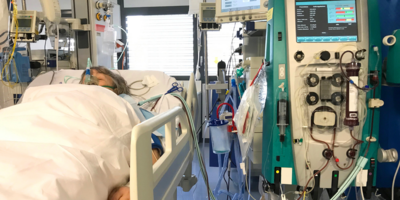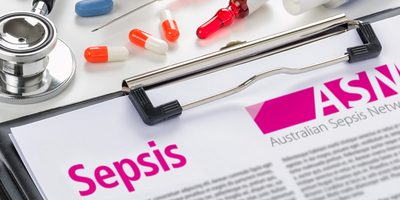
Burden of silent killer vastly underestimated, new study reveals
SYDNEY, JAN 17 - There are three times as many cases of sepsis and almost twice as many Australians dying from it each year than previously thought, according to the first assessment of the worldwide burden of sepsis published in The Lancet today.
The Global Burden of Disease study used data from 109 million death records and 8.6 million hospital records in 195 countries and territories to estimate the burden of sepsis around the world.
It found there were 49 million sepsis cases and 11 million deaths in 2017 - double previous estimates
– with as many as one in five deaths worldwide related to sepsis.
Contributing author Professor Simon Finfer from The George Institute for Global Health said it was concerning that so many lives were being lost to a condition that is largely preventable.
“Previous estimates of the burden of sepsis in Australia were mainly those treated in intensive care units, which put the number of cases at 18,000 and deaths at 5,000,” he said.
“But the GBD estimate now gives a more accurate picture of the size of the problem by including sepsis occurring outside of the hospital, putting the number of Australian cases at 55,000 and deaths at 8,700.”
Sepsis is a time-critical medical emergency that arises when the body’s response to an infection damages its own tissues and organs. It can lead to shock, failure of multiple organs, and death if not recognised early and not treated promptly.
Sepsis affects people of all ages and patients across a broad range of clinical specialties but particularly the very young, the very old and Aboriginal and Torres Strait Islander peoples. However, awareness is low with a 2016 survey finding 60 percent of Australians had not heard of sepsis and only 14 percent could name one of its symptoms.
“Compared to lower income countries there are very few injury related sepsis deaths in Australia, which likely results from our well organised and comprehensive trauma and critical care systems. This stands in stark contrast to the lack of such a system to deal with sepsis,” added Prof Finfer.
“We urgently need a coordinated national approach that addresses pre-hospital and in-hospital recognition and treatment, to address the significant death and disability caused by sepsis in Australia.”
Other findings from the study:
- The large majority of sepsis cases – 85% in 2017 – occurred in low- or middle-income countries.
- The highest burden was found in sub-Saharan Africa, South Pacific islands near Australia and Southeast Asia.
- Sepsis incidence was higher among females than males.
- By age, the incidence of sepsis peaks in early childhood, with more than 40 percent of all cases occurring in children under 5.
Professor Finfer established the Australian Sepsis Network (ASN), a national association working closely across jurisdictions, sepsis clinical champions and survivors.
In early 2018, the ASN, which is hosted at The George Institute, released the ‘Stopping Sepsis National Action Plan’, which was developed in collaboration with policy, clinical, academic, research and survivor stakeholders.
In 2019, Australian Government committed $1.5m to address the burden of sepsis through the development of treatment guidelines for health professionals and public awareness initiatives.
“We hope that by continuing to raise awareness of sepsis both in the community and amongst health professionals and providing clear guidance on treatment, we will start to see a decline in the burden of this often devastating condition,” added Prof Finfer.
About the Global Burden of Disease study
The Global Burden of Disease (GBD) study is the largest and most comprehensive effort to quantify health loss across places and over time. It draws on the work of more than 4,300 collaborators from 146 countries and territories. The Institute for Health Metrics and Evaluation at the University of Washington School of Medicine coordinates the study.The GBD 2017 study was published in November 2018 and includes more than 38 billion estimates of 359 diseases and injuries and 84 risk factors in 195 countries and territories from 1990 to 2017. For more information about the GBD Study, see http://www.healthdata.org/gbd.
The George Institute for Global Health
The George Institute for Global Health is an independent medical research institute aiming to improve the health of millions of people worldwide by generating effective, evidence-based and affordable solutions to the world’s biggest health challenges. Headquartered in Sydney, with major centres in China, India and the UK, it has projects in more than 50 countries and affiliations with world-class universities. In 2018, The George Institute was ranked the number-one independent research institute in Australia by Times Higher Education.







